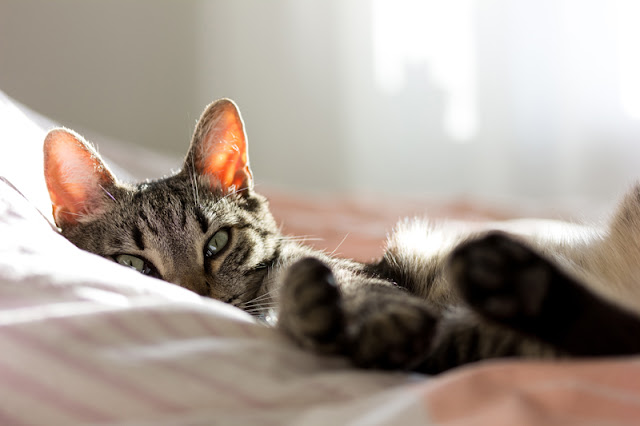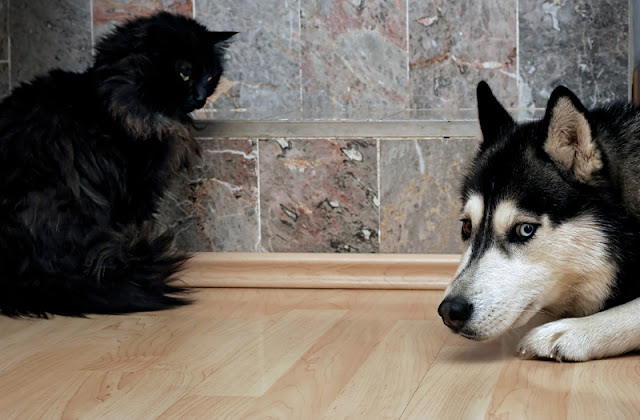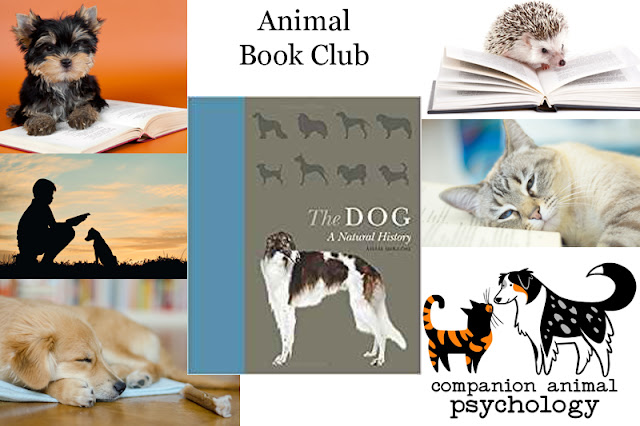 |
| Photo: Bad Monkey Photography |
When you get a new puppy or kitten, no one tells you your new pet has five main welfare needs that need to be met. But maybe they should, because they provide a framework for how we should care for dogs, cats, and other pets. Read on to find out what they are, how many pet owners know them, and why they matter to you.
The Five Freedoms
The Five Freedoms were originally defined by the UK’s Farm Animal Welfare Council in the 1960s, and subsequently updated. They are now understood to apply to the welfare of all animals, not just livestock.
The Five Freedoms are:
- Freedom from hunger and thirst, by ready access to water and a diet to maintain health and vigour.
- Freedom from discomfort, by providing an appropriate environment.
- Freedom from pain, injury and disease, by prevention or rapid diagnosis and treatment.
- Freedom to express normal behaviour, by providing sufficient space, proper facilities and appropriate company of the animal’s own kind.
- Freedom from fear and distress, by ensuring conditions and treatment, which avoid mental suffering.
The Five Freedoms define animal welfare and consequently you can find them on the websites of organizations like the ASPCA (with a downloadable poster), the BC SPCA and the RSPCA Queensland. In the UK, the RSPCA and the PDSA write about how these welfare needs are enshrined in law.
The Five Freedoms tell us our pets have five welfare needs – diet, environment, health, companionship, and behaviour.
 |
| Many cats prefer to be solitary, while others enjoy companionship from other felines.. Photo: Anna Luopa / Shutterstock |
Knowing About the Five Freedoms
How many pet owners know about these needs? Every year since 2011, the PDSA in the UK has released its PAW report on the welfare of pets. The 2018 report tells us how many people know about these five welfare needs.
The good news is that most people were able to identify four of the five welfare needs when shown a list.
- 87% identified the need to be protected from pain, suffering, injury and disease.
- 85% identified the need to live in a suitable environment.
- 85% identified the need for a suitable diet
- 67% identified the need to exhibit normal behaviour patterns.
So what did most people miss?
- Only 18% identified the need to be housed with, or apart from, other animals.
Unfortunately these needs are not as well known as they should be. Only 13% of pet owners were able to correctly identify all five of the animal’s needs.
And 29% of people thought that a need for human company was one of the welfare needs.
The Need for Companionship
Of course, for each animal these needs will be met in different ways.
Take the need to be kept together with (or apart from) other animals of the same species.
Guinea pigs need companionship from other guinea pigs and should not be kept alone. Because of this, in Switzerland it is illegal to keep just one guinea pig.
Rabbits are also very sociable, and prefer to live with at least one other rabbit that they are bonded with. (Remember to neuter them so as not to have too many rabbits).
Domestic cats as a species are flexible in their social behaviour. Some cats can live happily with other cats. This is especially likely for cats that have grown up together and/or that were socialized with other cats during the sensitive period for socialization (but there are no guarantees). On the other hand, as solitary hunters cats do not need other cats to survive, and some cats do not like to have to share their home with other cats.
 |
| Many dogs enjoy canine companionship. Photo: Bad Monkey Photography |
Most pet dogs are sociable and like to have other canine friends. Luckily, if there are no other dogs in the home, it’s possible to arrange dog walks with other friendly dogs or visit doggy daycare or the dog park so your dog still gets to hang out with other canines.
However, if you have the kind of dog who – for whatever reason – does not like to hang out with other dogs, they should be kept separate. (This is especially the case if the dog is a risk to other dogs and will attack them).
So you need to consider the needs of the species as well as those of your individual pet.
 |
| Photo: Ase / Shutterstock |
The Welfare of Cats, Dogs and Rabbits
The PAW report looks at the welfare of the UK’s dogs and cats in terms of the welfare needs and is engagingly presented if you want to take a look (see the link below).
One of the figures that caught my eye is that 12% of dog owners have never trained their dog, a percentage that has not changed much over the years of the PAW reports.
24% of dogs were left alone for 5 or more hours on weekdays. As a general guideline, it is recommended that dogs should not be left alone for more than 4 hours.
And although 80% of people thought their dog was the right weight, 40% did not know how much the dog weighed or what the body condition score was.
For cats it is even worse, with 65% not knowing how much the cat weighs or the body condition score.
And 77% of cat owners said they would like to change at least one of their cat’s behaviours. The most common were scratching furniture (27%) or carpets (22%). (Scratching is a normal behaviour for cats and it’s up to us to provide good scratching posts). As well, 17% reported the cat waking them up, and 17% said the cat begged for food.
Weight was also an issue for rabbits, with 77% of owners not knowing the rabbit’s weight or body condition score.
And companionship is also a major concern, because 54% of rabbits are kept as solitary animals. The PDSA report says “Living a solitary life will be seriously impacting on the physical health and mental wellbeing of our pet rabbits.”
 |
| A solitary life is bad for rabbits. Photo: Ostapenko / Shutterstock |
Updating the Five Freedoms
The Five Freedoms have been tremendously helpful in providing a framework to improve animal welfare.
If we don’t provide them for our pets, they will be stressed and unhealthy. It is also important to note that many behaviour problems are, at least to some extent, a result of the animal’s welfare needs not being met.
More recently, a complementary approach to animal welfare called the Five Domains has been proposed by Prof. David Mellor. One of the things about this approach is that it emphasizes the need for positive experiences, not just minimizing negative experiences. You can read more about the Five Domains model here.
Whatever kind of pet we have, it’s important to think about how to provide for good welfare in terms of health, environment, diet, behaviour and companionship.
What do you think is the priority for improving people’s knowledge of what their pets need?
Further Reading
Five fun things to do to make your dog happy today and how to make the world better for dogs.
Five things to do for your cat today and how to make the world better for cats.
References
Farm Animal Welfare Council (2009) Farm Animal Welfare in Great Britain: Past, Present, and Future.
Mellor DJ (2016). Moving beyond the "Five Freedoms" by Updating the "Five Provisions" and Introducing Aligned "Animal Welfare Aims". Animals : an open access journal from MDPI, 6 (10) https://doi.org/10.3390/ani6100059
PDSA (2018) Paw Report. Available for download at https://www.pdsa.org.uk/media/4371/paw-2018-full-web-ready.pdf
As an Amazon Associate I earn from qualifying purchases. As an Etsy affiliate, I earn from qualifying Etsy purchases.



























